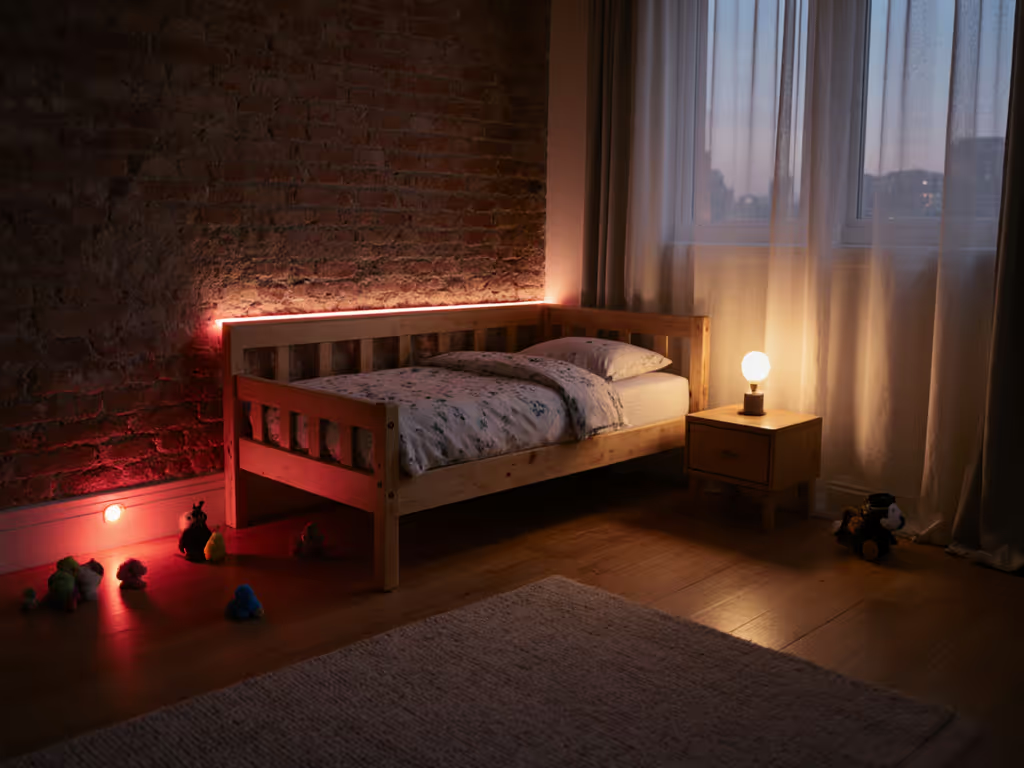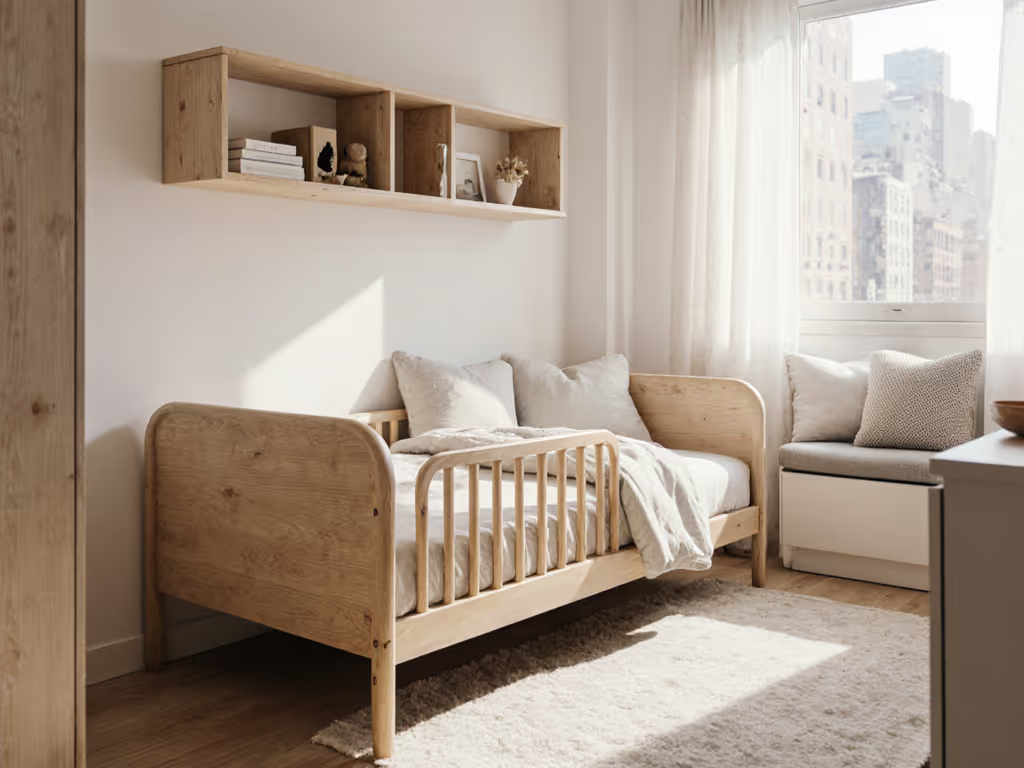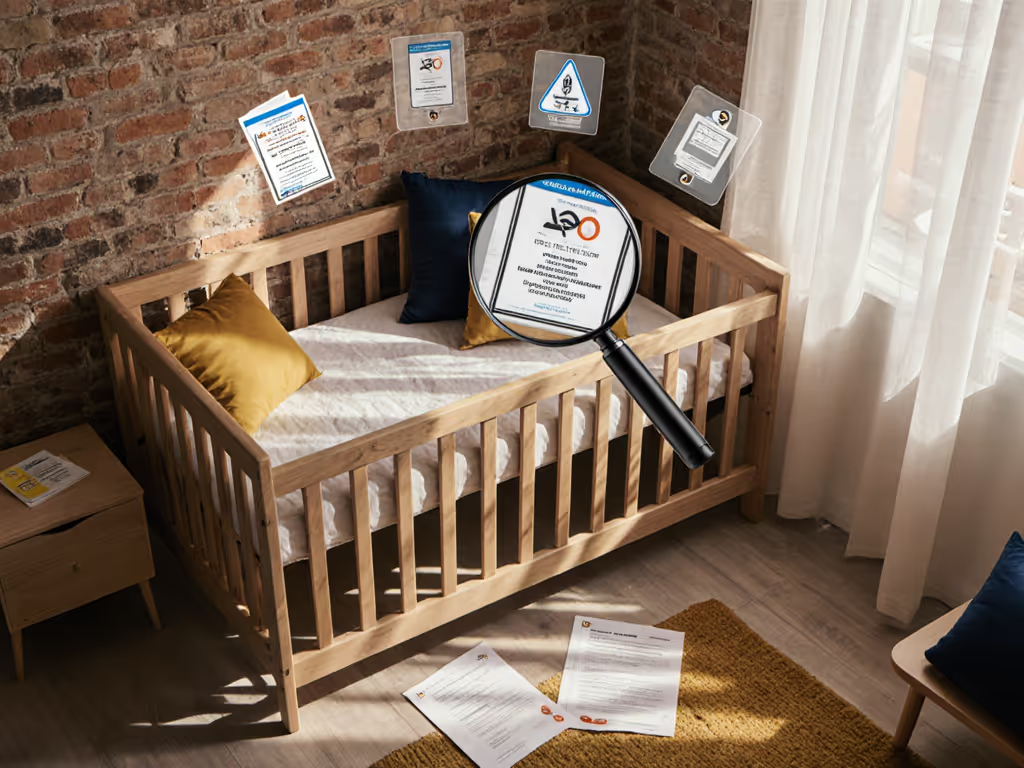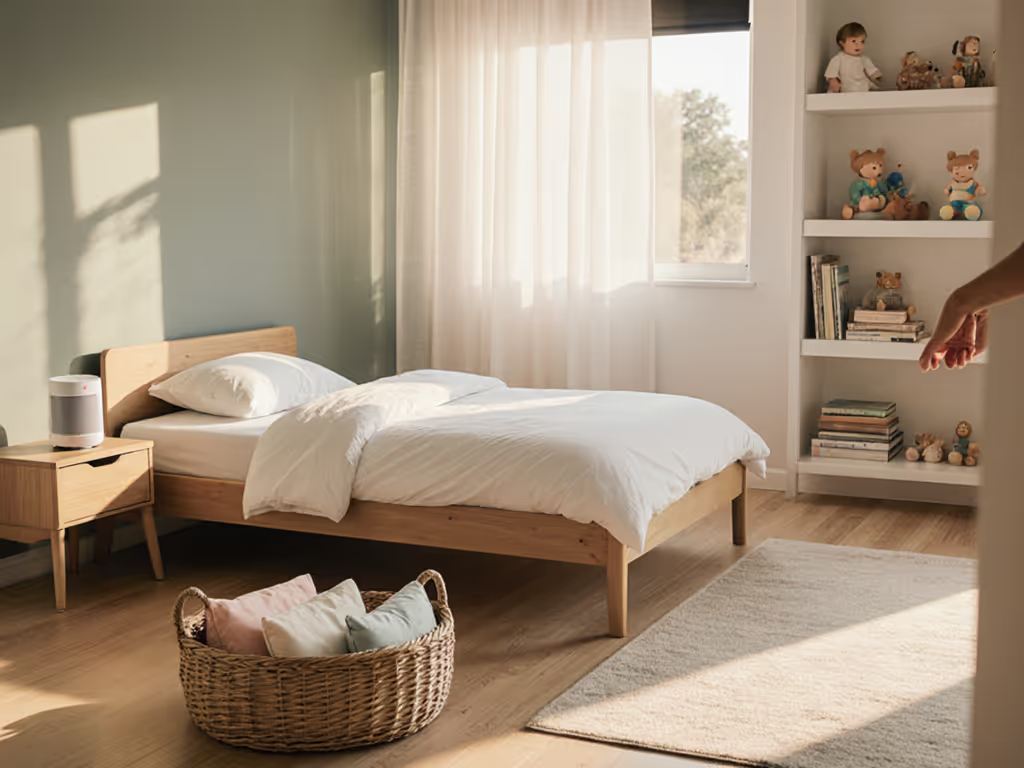
Toddler Sleep Apnea Bed Safety: Verified Positioning Guide
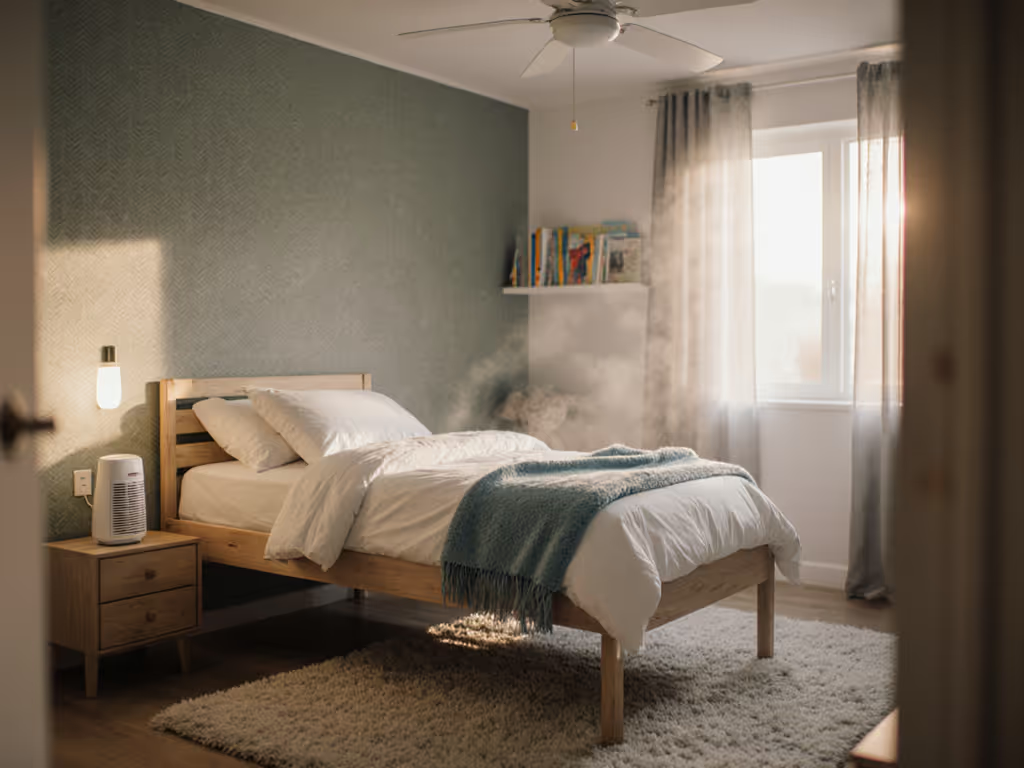
When your toddler has been diagnosed with sleep apnea, the phrase sleep apnea toddler bed takes on urgent meaning. This isn't about aesthetics or convenience: it is about toddler breathing disorder safety at its most fundamental level. As a parent and product safety researcher who's spent years examining low-profile beds for stability and airflow, I approach this topic with eyes wide open: what looks helpful often introduces hidden risks. Boring and low beats pretty and risky every time.
At a recent neighborhood playdate, I watched a toddler attempt to climb over a high rail on what appeared to be a 'safe' bed, and suddenly that rail became a dangerous lever when their foot caught underneath. No injuries occurred, but it reinforced my belief that we must nip hazards upstream by designing from the floor up. When it comes to sleep apnea, the margin for error is even narrower. Below, I address your most pressing safety questions with evidence-based positioning guidelines.
Why can't I just use a standard toddler bed for my child with sleep apnea?
Standard toddler beds prioritize transition from crib to bed but rarely account for breathing disorder safe sleep requirements. The critical flaw? Flat sleeping surfaces fail to optimize airflow when airway obstruction occurs, a common issue in pediatric obstructive sleep apnea (OSA).
Research shows supine positioning (on the back) on a flat surface can worsen OSA symptoms in children who already struggle with airway collapse. Yet many beds marketed for toddlers with breathing issues simply replicate standard designs with minimal modifications. Before making any purchase, ask:
- Does this design address the risk hierarchy by prioritizing airway maintenance over aesthetics?
- What evidence exists that the center of gravity won't shift dangerously during sleep attempts?
- Does the manufacturer provide third-party testing data on actual breathing improvements?
Is an elevated sleeping position truly safer for toddlers with apnea?
Yes, but with critical caveats most manufacturers won't disclose. An elevated sleeping position for toddlers (30-45 degrees) can reduce apnea events by preventing airway collapse, but only when implemented correctly:
- Improper elevation creates new hazards: Wedges that aren't properly secured shift during sleep, creating dangerous gaps between mattress and support structure where limbs can become trapped
- Neck strain risk: Positioning must maintain neutral spinal alignment, too steep an angle strains developing cervical structures
- Fall potential: Elevated positions increase fall distance if proper guardrails (5-inch guardrail rule) aren't integrated
Boring and low beats pretty and risky every time. When it comes to airflow optimization for toddler beds, verified stability matters more than height adjustment claims.
Are commercial sleep positioners safe for toddlers with breathing disorders?
This is where I need to be brutally honest: most 'toddler sleep positioner safety' claims are marketing fiction. The American Academy of Pediatrics explicitly warns against infant positioners due to suffocation risks, and while toddlers have more mobility, similar dangers persist.
In my product testing, I've witnessed positioners that:
- Shift unpredictably during sleep attempts
- Create pressure points that actually restrict breathing
- Contain materials with questionable VOC disclosures
If you're considering a wedge or positioner, verify these three elements first:
- Edge radius measurements (anything sharper than 0.5 inches creates pinch points)
- Independent testing for stability under dynamic conditions (not just static weight)
- Complete VOC disclosure meeting California Proposition 65 standards

How can I verify proper airflow optimization without buying specialized equipment?
You don't need expensive gadgets to assess basic airflow optimization for toddler beds. Implement these low-tech verification methods:
- The hand test: Place your hand near your sleeping child's mouth and nose. If you can't consistently feel warm air moving out with each breath, reposition immediately
- The paper test: Hold a lightweight tissue 2 inches from their nose. It should gently flutter with each breath
- The observation log: Track nighttime awakenings correlated with sleeping position
These methods won't replace medical monitoring, but they provide immediate feedback on whether your current setup maintains adequate airflow. Remember that proper positioning requires both elevation and stability (wobbly beds compromise even the best angles).
What bed features actually matter for sleep apnea safety?
When evaluating beds for toddler breathing disorder safety, skip the marketing fluff and focus on these evidence-based features:
- Anchoring hardware that secures the bed to the wall (not just floor anchors)
- Solid construction with low center of gravity (heavier beds resist movement)
- Rounded edges throughout (minimum 1-inch radius)
- Mattress compatibility that prevents gaps where limbs could slip through
One product that incorporates several of these principles offers adjustable elevation between 3.9-8.3 inches. While not a complete bed solution, its 45-degree incline design demonstrates proper angle mechanics when used under medical guidance. The key differentiator? A removable, machine-washable cover that addresses the VOC concerns many parents overlook.
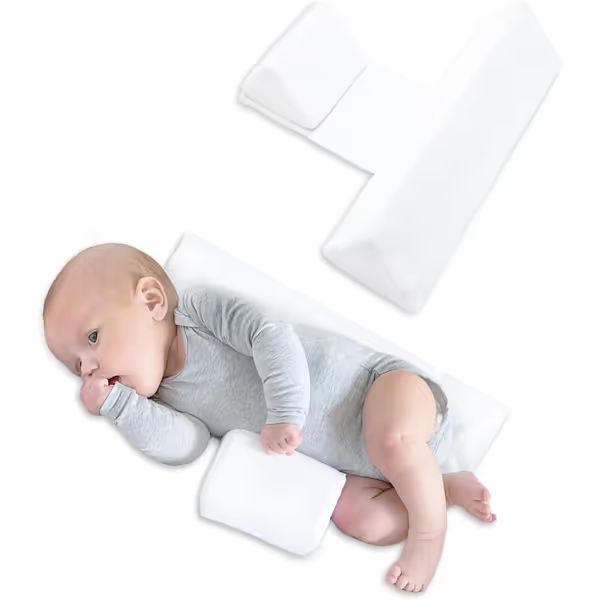
Baby Side Sleeper Weddge Adjustable Soft and Breathable Pillow
How do I balance safety with the reality of small living spaces?
This is where most parents face their toughest compromises. In tight urban apartments, parents often resort to unsafe configurations because 'something has to fit.' Instead, adopt this risk hierarchy:
- Prioritize floor-level stability over storage features
- Eliminate all soft bedding - no 'comfortable' pillows that compromise airway safety
- Measure twice, buy once - verify exact clearance for movement pathways
Many parents believe they need expensive specialty beds, but often the safest solution is simplest: a low-profile platform bed with breathable guardrails that hugs the wall, eliminating gap hazards while maintaining proper positioning. Simplicity, done right, scales safety.
Final Verification Checklist Before Bedtime
Before settling your toddler for sleep, run through this evidence-based verification routine:
- Airway check: Confirm unrestricted breathing in the chosen position (use hand or paper test)
- Stability test: Apply gentle pressure to bed frame, no movement or creaking
- Gap inspection: Verify no spaces larger than 2 fingers between mattress and frame (for rail setups, follow our bed rail installation guide)
- Fall clearance: Ensure at least 24 inches of clear space around bed
- Material verification: Check for current VOC compliance documentation (see our non-toxic finishes guide)
When you prioritize these fundamentals over 'innovative' features, you're not being boring (you are building genuine safety). I've tested enough beds that collapse under pressure (literally and figuratively) to know that the most reliable solutions often look deceptively simple. Nip hazards upstream by making stability non-negotiable (not just tonight, but for every night ahead).
Further Exploration
For parents navigating this complex terrain, I recommend:
- Consulting your pediatric sleep specialist about verified positioning protocols specific to your child's apnea severity
- Reviewing the American Thoracic Society's position papers on pediatric sleep apnea
- Joining the CDC's Safe Sleep Community for evidence-based guidance from medical professionals
Remember: true safety innovation isn't flashy, it's the quiet confidence that every element has been verified from the floor up. Your child's breathing deserves nothing less.

